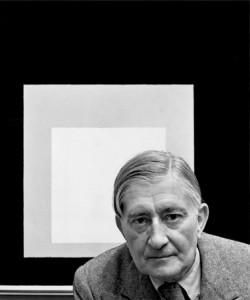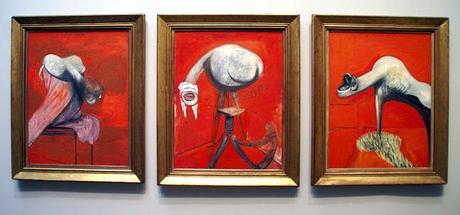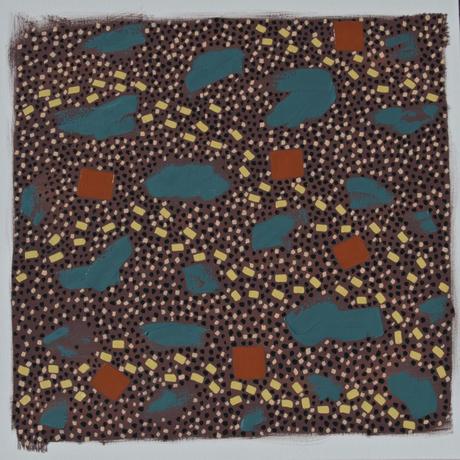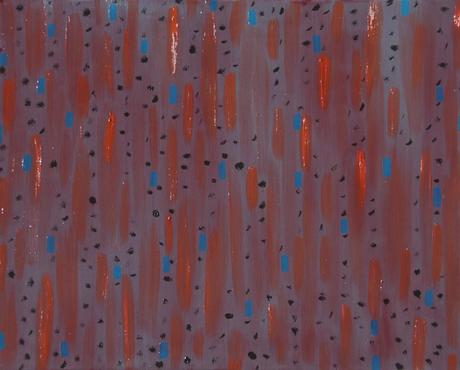Not but a day or two ago a veteran Verizon DSL Technician visited our studio office. While he was working on boosting our DSL speed he looked at some of the paintings in the office and commented, “What was your inspiration for this painting…and again for that painting?” I replied in what could have been interpreted as a smart A** reply. NADA. His eyes widened, “What do you mean you are not inspired?” So I explained, “I do everything humanly possible to not be influenced by what I see…and in some cases what I hear, read or touch”.
I personally think many artists and those who look at art are hood-wigged into thinking that in order to be creative you have to be stimulated by some outside force. Art teachers promulgate this lure so their students become dependent on searching for some elusive muse that will get inside their brain and feed them with profound creative thoughts. To make things even more complicated, artists and those who view art have constantly defined and re-defined the nomenclature of art, to some known as “art speak”.
When I look at Hans Hoffman who in no short way influenced hundreds of successful and not so successful artists to become dependent on theory. Hans was a master at creating the Techniques of Critique. He even is credited with specific art theories like PUSH and PULL and many others.
http://www.pbs.org/hanshofmann/push_and_pull_001.html
Loosely paraphrasing Mercedes Matter who was a friend of Hans, he admitted to her that he was becoming depressed for all those years of teaching and not creating. It seems to me that he was creating a lot of vocabulary for artists to use to justify their own artistic value. I suppose that is a creative outlet onto itself. But it wasn’t until he had to face that blank canvas on his own that his OWN inner thinking had to look at the creative side of being innovative without outside influences.
This is a divinely fine line. How can you be an artist and not be influenced?? If you are an interpretive artist you can start with a subject and then begin to bend the rules. A horse becomes blue…a tree becomes pink in the shadow areas. So the subject dictates your creative interpretation. But…to be truly creative, you have to move into non-interpretive art. There you are all on your own…and the self doubts abound.
I have studied the works of many abstract artists and for some reason they always need the security of inspiration, rather it be nature or a poem.
I knew the Verizon man was a bright cookie…very articulate. Seeing how I would not give him a rationale for a particular painting, he gave me his…what fun! Not another self-proclaimed art aficionado…but a real gut level input from an innocent. His descriptions reinforced my own desire not to lead a painting, but to let the viewer interpret on their own. This is somewhat contradictory because I do name my paintings giving the viewer a clue as to how to think. I can’t stand the idea of giving them a number. For me naming a painting after it’s completed allows me the luxury of interpreting my own outside influences.
I know there’s people out there who insist that I was influenced by Albers (i.e. Homage to the Square), but no… when I started painting I did not know who he was, nor had I ever seen one of his paintings. In the opening of my website I do suggest that certain artists had they lived or painted longer might have emulated my Receptive Abstract Patternism style. Which may or may not have embellished their careers.

Josef Albers
If there was one artist that influenced me more than any other, and I can honestly say I find his work extremely disturbing and nightmarish, that would be Francis Bacon. But here is an artist who was truly a original and completely understood the danger of taking art classes.

Francis Bacon - Studies for Figures at the Base of a Crucifixion
Can you create without being influenced? Yes I believe you can. But you have to approach the canvas without any preconceived notion and you have to let the creativity flow through your body. There are many creative people that are amazed at what comes out of their soul. Writers look back at their writing and are amazed. Artists revisit a painting and sometimes find it hard to believe that they actually created that. A good example of non-influenced painting is Jackson Pollock. His only sin was trying to explain how he created. What is it with us artists that require us to have some justification for what we create?? Wouldn’t it be simply wonderful if we just Did It…didn’t care why or what…or rhyme or reason??? So what if your best painting hangs in your bathroom???

HIgh Desert Fallen Joshua Tree
While looking at a fallen Joshua Tree it’s difficult not to take away an impression that may later try and creep into a painting. I did take a somewhat artistic photo of the Joshua Tree. The Mormon pioneers named this treelike plant after the prophet Joshua, because its extended branches resembled the outstretched arm of the prophet Joshua as he pointed with his spear to the city of Ai.

Joshua Tree - Mojave Desert in Winter
Created this photograph just for fun on my iPod Touch. Nothing special but very few people in the world every see a Joshua Tree. Amazingly this giant is related to a lily!
“Creativity may be cerebral influences that are not necessarily interpreted in the conscious mind. There is simply no justification for certain art. They do not exist in any world that we actually know or can relate to. In the end…The only truth is color.” From a literary work in progress by Rod Jones Artist.

Rod Jones Artist - Tate Cafe - oil on canvas - 36x36

Rod Jones Artist - Dyslexia - Oil on Canvas- 24x30

Rod Jones Artist- Poe's Reign - Oil on Canvas - 24x30

